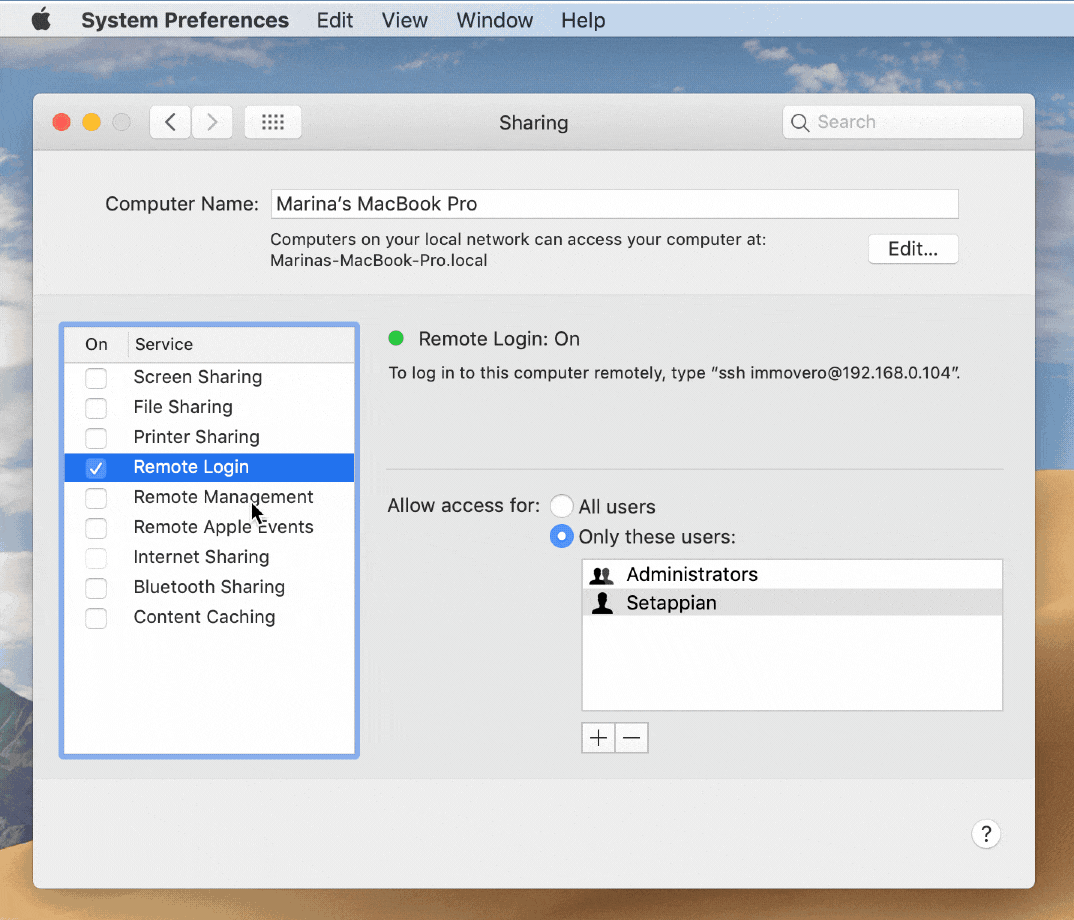

- #REMOTE ACCESS FOR A MAC PARALLEL CLIENT FULL#
- #REMOTE ACCESS FOR A MAC PARALLEL CLIENT WINDOWS 10#
- #REMOTE ACCESS FOR A MAC PARALLEL CLIENT SERIES#
- #REMOTE ACCESS FOR A MAC PARALLEL CLIENT WINDOWS#
You can improve user performance by adding the FSLogix container settings.
#REMOTE ACCESS FOR A MAC PARALLEL CLIENT WINDOWS#
Or if they're using Windows, they can open individual applications inside their current Windows session and work with them seamlessly as if they were local, while saving files into the remote environment where IT can handle security and compliance.
#REMOTE ACCESS FOR A MAC PARALLEL CLIENT FULL#
This is flexible and convenient for users, who can access the full remote desktop with preinstalled applications from any device, or pull up just an individual app. When publishing applications to users, you can also add bookmarks for SaaS applications and app portals like Azure MyApps alongside virtualised legacy apps. Parallels RAS 18 can also manage autoscaling for on-premises remote desktop deployments. That's a friendlier approach for admins who might be familiar with VDI but not with Azure. Parallels RAS 18 has a wizard that can do a lot of the work for you, including setting up the session hosts and the rest of the WVD infrastructure, deploying the WVD agent on those hosts and configuring autoscaling for the number of users you want to support per host.
#REMOTE ACCESS FOR A MAC PARALLEL CLIENT SERIES#
It also simplifies setting up WVD in the first place, which usually means working your way through a series of tasks on the Azure portal to set up the VMs and other resources that WVD will run on. Parallels RAS 18 provides a wizard to deploy WVD for you. If you're already using physical load balancer appliances, you can carry on taking advantage of those Parallels RAS 18 includes tools to manage the CPU on load balancers when you increase user density and a High Availability Load Balancer (HALB) virtual appliance to partition front end access traffic between gateways.
#REMOTE ACCESS FOR A MAC PARALLEL CLIENT WINDOWS 10#
The fact that you're only paying for the Azure resources to run WVD if you have Windows 10 Enterprise licences (and the free extended support for Windows 7) makes it an appealing commodity approach to virtual desktops that can sit alongside existing investments. But the integration will be very useful for those who already have remote desktop and applications hosted in their own data centres, or on other cloud services that they don't want to migrate to Azure, even if they're taking advantage of the WVD benefits. Organisations may not invest in Parallels RAS just to make WVD easier to work with. Parallels RAS 18 delivers the familiar remote desktop experience. The Parallels client lets users open a full desktop or specific applications. Admins can also monitor the metrics proactively, with customisable warnings and critical thresholds, to see if a new service they roll out is slowing things down for users. UX Evaluator measures things like how long it takes from a user clicking on an icon on their remote desktop until the application responds, rather than just the underlying network connection. Those are now bundled up into a UX Evaluator metric that the helpdesk can examine when someone calls in with a problem, to see if they're just on a slow connection or whether group policy or remote access policies are causing issues. Partly that's to appeal to admins with experience of the Parallels RAS management tools, which have handy features that aren't yet available in WVD, like showing the session metrics that reveal poor remote desktop performance for users, so you can troubleshoot them. How Parallels RAS 18 works with Windows Virtual Desktop (WVD). However, version 18 also touts its integration with WVD. As an all-in-one VDI and remote application solution that you can run in the cloud or on your own server, delivering entire Windows desktops or individual applications on Windows, Mac, iOS, Android, Chromebook and any HTML5 client, Parallels RAS is in competition with cloud services like Windows Virtual Desktop (WVD).


 0 kommentar(er)
0 kommentar(er)
